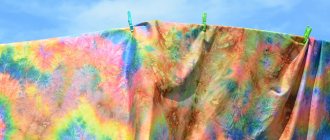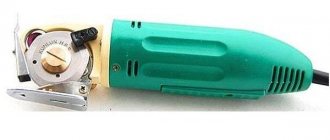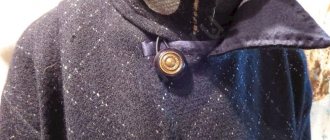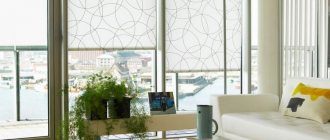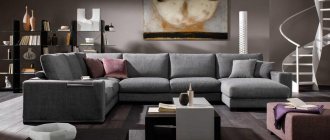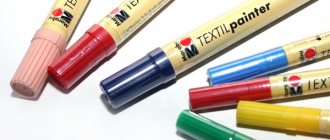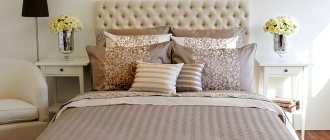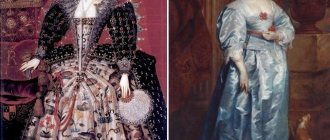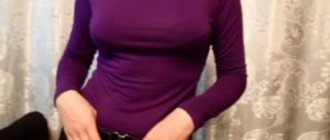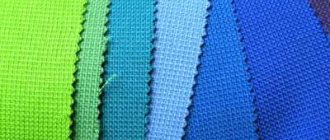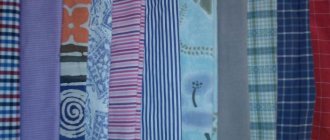Sublimation printing
Sublimation printing on fabric is a type of full-color printing used on synthetic and semi-synthetic fabric. It is distinguished by its realistic and durable image.
Photo: Shutterstock.com
Technology
During the printing process, a design is applied to sublimation paper using a plotter, after which, under the influence of high temperatures of 180-200 ° C, the ink is converted into steam and penetrates deep into the structure of the material. The technology allows you to obtain highly detailed pictures and bright colors that are resistant to environmental influences and repeated washing.
Application
Sublimation photo printing is widely used in advertising - applying inscriptions, images, company logos to exhibition stands, banners, advertising tablecloths, umbrellas, corporate clothing, souvenirs. This technology is also used for interior design, production of theatrical scenery, curtains, and costumes.
Advantages and disadvantages
This type of fabric printing has many advantages compared to other methods:
- Realism of the image – high quality of the drawing, comparable to a photograph made on paper.
- Wear resistance - the print retains its original appearance for a long time - does not change color, does not fade, and is not susceptible to cleaning agents.
- Large format printing – the ability to produce products of any size with high image clarity without limitation in the number of shades.
The disadvantage of sublimation printing can be considered the possibility of applying it exclusively to synthetic fabric or material with a slight admixture of natural fibers.
Examples of sublimation printing on video.
Batik painting, painting on fabric, silk – paintings, panels
The batik technique allows you to create real masterpieces, which subsequently serve as decoration for apartments and houses. Batik paintings and panels, made in various ways, can become the highlight of any interior, and bright colors and outlandish patterns can enliven even the most austere furnishings.
Silk painting, batik
Batik, panel
Silk screen (analog) printing
Silk-screen printing (silk-screen printing) is a method of printing on fabric using stencils. An inexpensive type of printing used for the production of large quantities of textile products.
Technology
A stencil is a mesh fabric with a pattern that must be transferred to the fabric. The stencil is placed on the surface to be painted and paint is applied on top of it. The pattern settles on the fabric through the holes and dries quickly, after which it remains resistant to fading and color fading.
Application
The stencil application technique is suitable for printing logos, fonts, vector designs, and can be used on any fabric - from coarse material for banners, bags, backpacks to thin cotton and linen. Most often used in the production of text advertising banners, signs, corporate clothing, club sports and work uniforms.
Advantages and disadvantages
The advantages of silk screen printing include:
- Low cost for large quantities of products with identical images.
- Environmental resistance.
- Possibility of printing on natural fabrics.
The disadvantage of the technology is the limited number of shades used. As a rule, no more than 6 colors are used within one stencil.
Tips - what to consider in your work
In order for painting on a fabric basis to turn out “excellent”, you should follow a number of important tips and recommendations:
- purchase only high-quality paints in specialized stores (colors that are too cheap may be fake);
- pay attention to the expiration date - it should be normal;
- get acquainted with the composition of paints - if they are good, they do not contain toxic components, heavy metals, and there is no unpleasant odor;
- before painting a large canvas, do a color test on a small area, evaluate the work after the paint has completely dried;
- for work, use brushes with synthetic bristles, rollers, sponges;
- Apply each new layer after the previous one has dried;
- After a day, fix the design with an iron - iron it for at least 5 minutes;
- high-quality products do not spread on fabric, are durable, and are not destroyed by water after hardening.
Direct printing on fabric
Direct digital printing allows you to apply prints of any complexity directly onto fabric. The technique is convenient for fulfilling orders from 1 product, compared to silk-screen printing, which is advantageous to use for runs of 50 units or more. You can order the design on fabric made of cotton or synthetic fibers.
Technology
Direct printing on textiles is carried out on the principle of an inkjet printer using dyes based on metal oxides, which are reliably held on the surface of the fabric. The technology provides high image detail at low cost and the ability to make changes to the layout from copy to copy.
Application
The method is used for printing logos, inscriptions, images of any complexity on T-shirts, raglans and other textiles.
Advantages and disadvantages
The advantages of direct printing include:
- Get clear, full-color images.
- Wear resistance of the pattern is up to 50-60 washes.
- Possibility of printing on natural fabrics.
The disadvantage of this method is the relatively low baking speed, suitable for the manufacture of small batches of products.
Areas of application of batik
Batik is used to decorate the interior. Bedspreads, sofa cushions, wall panels, bed linen, etc., painted using this technique look beautiful. Such details make the interior lighter and more sophisticated.
The clothes are also hand-painted. The patterns are applied to blouses, dresses, neck scarves and handkerchiefs.
Tips for choosing the best type of printing
When choosing the optimal printing method, consider the pros and cons of each of them, and also take into account the advice of fashionprint.ru experts.
- For large format printing on fabric, the sublimation method is best suited.
- Silk screen technology has high productivity and will be optimal for large quantities of products.
- Direct printing allows you to obtain high-quality images with a wide color range on both synthetic and natural fabrics.
As an advertisement
Knotting technique and shibori
To make a design with knotted batik or shibori, you do not need to resort to the help of a reserve. The first method is to tie knots, from which some kind of plain or colored composition is subsequently formed on the canvas. The second method, which has Japanese roots, has some similarities with the art of origami and involves folding the dyed fabric in several layers. The material is folded to obtain a symmetrical pattern.
There should be a place in life... for creativity
British scientists have proven that a woman’s practice of batik increases her “happiness quotient” by 37%!
“I want something... Like this!..”
He sleeps in each of us.
And especially in each one.
He sleeps and waits in the wings. But once…
Your creativity awakens!
This “one day” comes sooner or later in the life of every woman, when she suddenly realizes that, in addition to “success in work and personal life,” she lacks something else...
For the soul!..
And then an amazing thing happens, almost magic:
The awakened creative potential begins to be realized. Myself! Almost without the participation of its owner!
Batik instead of annual report
But, for you personally, why do you need batik?
Of course, this is practical. You can make it yourself and give yourself and your loved one all sorts of handkerchiefs, scarves, accessories...
It's like that. But not only.
It’s just that every person should have not only production plans, but also creative plans! And batik is an ideal opportunity for creative fulfillment for a woman!
As one of my students said:
“So that when I don’t sleep at night, I have something to think about other than the annual report.”
However, some are so keen on the process that batik gradually becomes an additional source of income for them...
Free course for free people
What a nightmare! I have no:
Unified program
Curriculum
Class schedules...
In general, nothing like what most batik courses offer in St. Petersburg
My main rule:
You come empty-handed.
Everything you need: materials, tools, paints - I provide you with it in class. All this is of professional quality, and all this is included in the price of the courses!
My batik courses are for free people who are accustomed to getting not problems (“Oh, I don’t have time for class!”), but pleasure from everything they do.
There is no strict schedule here - we are all living people who have work, family, unforeseen circumstances... Therefore, when you have time and mood, you just call - and we agree on the next lesson.
And yes, I am not “Wevobuch” and my courses do not have a single curriculum. You choose the products you will make. You yourself formulate the goals you want to achieve.
And I’m already drawing up a program specifically for these purposes.
It’s individual for each one, because we are all so different!
What else…
It is most convenient to use acrylic paints. They are easy to use and affordable.
After finishing the work, perform a number of mandatory actions with the finished product:
- drying the material for up to 3 days;
- rinsing in cold and hot water;
- hand washing with soap;
- The silk is placed in a vinegar solution for 10 minutes. To prepare the solution, dilute 2 tablespoons of vinegar in a liter of water;
- cotton, linen, viscose must be boiled for no more than 5 minutes with washing powder;
- ironing wet from the back and then from the front side.
The pattern is chosen depending on your own taste. You can come up with it yourself, purchase it in a specialized store, or find it on the World Wide Web.
General recommendations
The modern range of woven materials allows you to experiment.
It makes sense to make the first tests on inexpensive cotton fabrics. It can be:
- calico,
- chintz,
- poplin,
- reps.
The following fabrics are suitable for painting by experienced craftsmen:
- batiste,
- chiffon,
- marquisette,
- madapolam.
Thin materials with a sparse weave of threads absorb the reserve composition and paints better.
Of the numerous assortment of silk fabrics for batik, materials with smooth plain weave threads are recommended first:
- crepe chiffon,
- crepe georgette,
- crepe de Chine,
- toile
When choosing silk fabric, you need to remember that it can shrink. That’s why, when cutting, the canvas should be taken with a margin of 5%.
Before painting, the new material must be rinsed to remove the finishing agent and dried. After this you can start working.
The modern range of woven materials allows you to experiment. Try, dare, create, decorate the living space of yours and those close to you.

